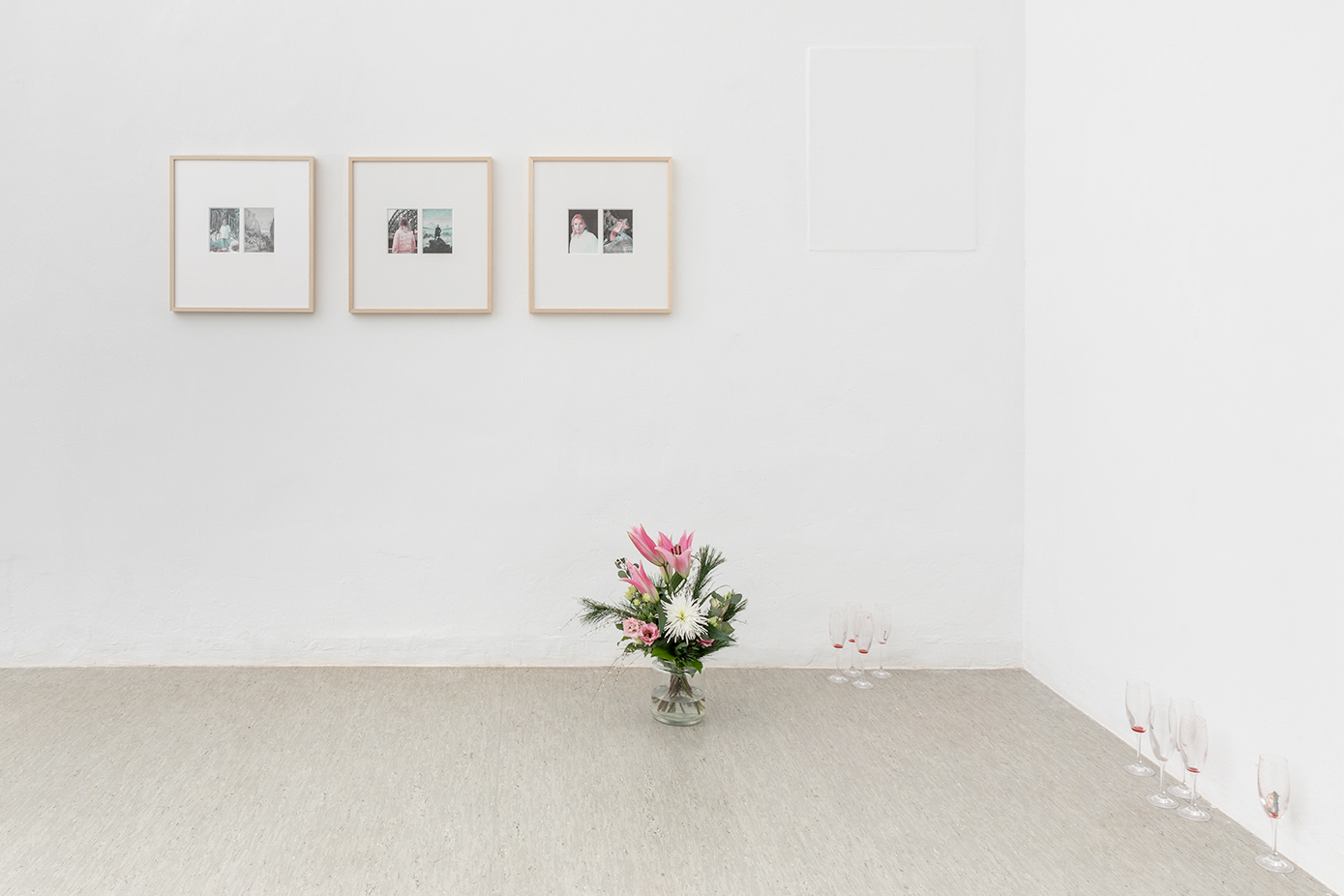Voodoo for Fun & Profit
Duo Exhibition Jan Berger & Theresa Büchner
10.12.22-16.12.22
What comes up to your mind when you think of rituals?
Is an exhibition a ritual?
And/or is – with a view to the present day – consuming sth. already a ritualistic act?
Walter Benjamin would say yes! According to him, we, as individuals of late capitalism, encounter religion or rituals only in the form of consumption: “capitalism serves essentially to satisfy the same worries, agonies, troubles to which formerly so-called religions gave answer”.Walter Benjamin: Kapitalismus als Religion (1921) Where Theresa Büchner’s photographic work Winners seems to tie in with Benjamin’s thoughts, Jan Berger has worked more in line with the faith of ritual acts in pre-capitalistic times. His series The Gazer juxtaposes images of Braco, a prominent healer, with art historical and pop cultural ones. In doing so a seemingly paradoxical refe- rence space is opened up consisting of religious representations, modernism, and computer-meme cultures that come together and become potent in Braco‘s esotericism.

»I see the eyes that heal« is how we might paraphrase Roland Barthes,Roland Barthes: Camera Lucida (1999) in the face of Braco‘s photographs and thus join him in his amazement at the connection between the photographic signifier and signified, which continues to be at the root of the latent animism attributed to photographs. And indeed, the mediated image, whether in the form of photography or live streams in Braco’s world, has a spe- cial significance: They are said to have as powerful an effect as the gaze of the healer himself, since even looking at his images promises healing. Photographs can also be used as agents of the patients willing to be healed and be gazed upon by the healer, thus transmitting the gaze to the absent – because Braco’s gaze is described as being so powerful that pregnant women and children are advised not to expose themselves to it directly. Almost like medusa the gaze of Braco has to be indexically mediated in those cases.

Making a film and buying yourself a prize (for it) is the only condition to participate at FICOCC (Five Con- tinents International Film Festival). In her work Winners, Büchner, who also works with film, shows 25 of these winners (or buyers) of said film award – the precious prizes seem as proof and at the same time as multipliers of their success. The winners rely on the agency of their self-portraits. Büchner made a selection for her work from the extensive pool of trophy-selfies circulated by the winners and arranged them in a grid. The silkscreen was printed with silver ink on dibond. This special materiality of the print leads to the fact that, depending of the lighting situation, if one changes one’s point of view, the picture will morph from a positive to a negative one. In this respect, Büchner’s work makes us, as viewers, move in order to perceive it in its entirety and thus ensures that the agency of the images become bodily.

The title of the exhibition – Voodoo for Fun and Profit – represents, according to both artists, another case of a merger of ritualistic practices for one’s own gain. Like the works of Berger and Büchner, the title is based on a concrete reference: It’s taken from Medical Detectives, a series about criminal cases and foren- sics. The episode in question deals with a historic “murder mystery roleplay” conducted by a poison murderer within the Mensa Foundation in Florida and – just like the exhibited works – signifies a case study global image economies, and the colonial strategy of repurposing lived culture into aesthetic tropes.

The artistic practices of Berger and Büchner not only take two different but structurally similar ritua- listic economies as their subject, but at the same time get involved in its circulation of images. The exhibition itself therefore becomes a simulacrum of those rites. The artworks in that sense possess a double function as artistic reflections on images and their agency as well as the specific logic and ritualistic function of their subjects – the self-portraits of the winners of FICOCC are made to be looked at to develop their agency. The same applies to the pictures of Braco, whose healing power also applies to the appropriated images of Jan Berger.
In themselves exhibitions can be conceived as ritualistic practices.
Curatorial Support: Leon Jankowiak & Paula Maß
Graphic: Victoria Allakhverdyan
Photos: Esra Klein
Text: Leon Jankowiak & Paula Maß
fffriedrich
Alte Mainzer Gasse 4 - 660311 Frankfurt am Main
DOWNLOAD EXHIBITION TEXT
